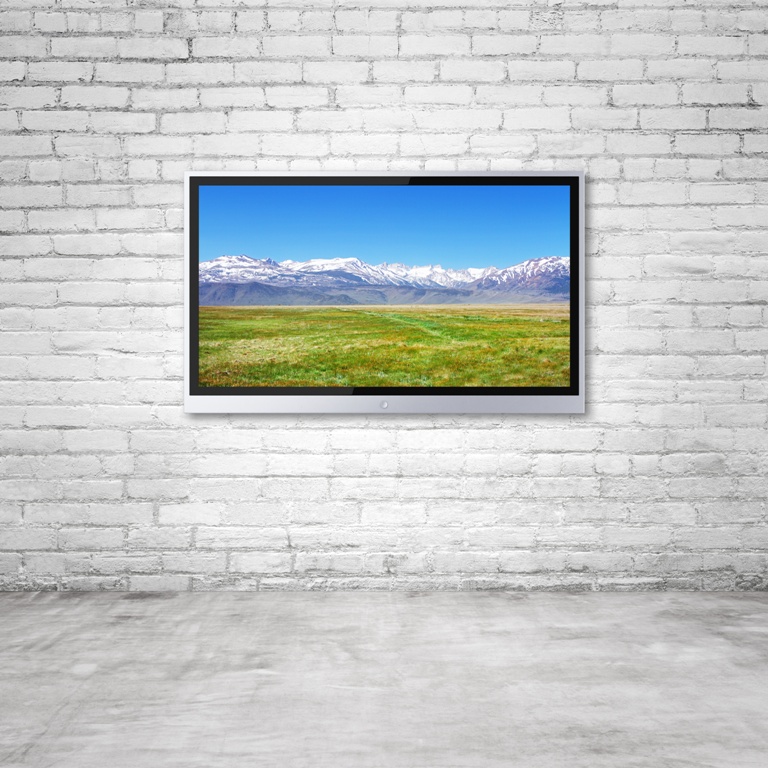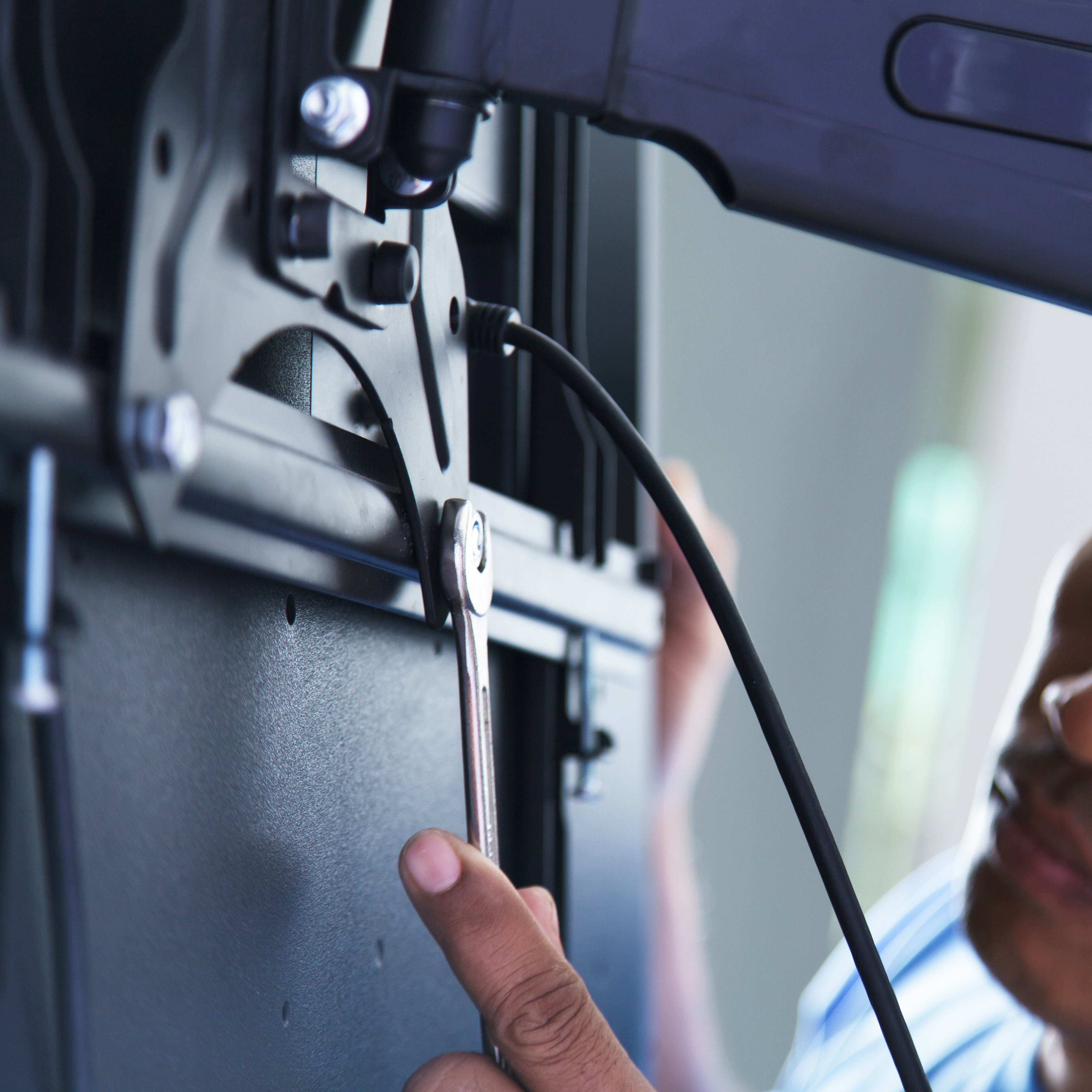DIY Guide: Hiding Cords On A Wall-Mounted TV
Nothing puts a finishing touch on a modern room than a wall-mounted HDTV. Whether it's in the living room, a family room or the bedroom, a large-screen television placed in a prominent and optimal viewing spot on the wall gives any space a contemporary, finished appearance. That look is greatly diminished, though, if there are unsightly black power and HDMI cables running down the wall from a newly-installed monitor. Hiding the cords is as important to the overall appearance of the room as hanging the television.

The overall task may seem daunting at first, particularly if you're not an accomplished carpenter or electrician. Fear not - it's surprisingly simple. Here's how to go about it.
Step 1: Mount The TV
There are two basic categories of wall mounts for flat-screen televisions. The first is the type that moves or swivels, allowing you to tilt or maneuver the TV so that it's positioned properly for the intended viewing area. These mounts are best for larger rooms where there are several different spots where people may want to sit. The second type is a simpler, fixed wall mount which installs flush against the wall and is ideal for smaller rooms where there's no need to move the screen.

Installing the wall mount is easy. Using a handheld stud finder, locate the two studs (usually 16 inches apart) where you want to place the mount, and then use the template that will come with your mounting hardware to mark the holes for drilling. Use the included lag bolts and washers to hang the mount, position it exactly where you want it, tighten the bolts and hang the TV. That's all there is to it.
Every mount is rated for screen size and weight (since, for example, a relatively small mount isn't going to be able to handle that 63-inch monster you've bought for your oversized living room), so be sure that the mount you purchase is appropriate for the size of your monitor. They're all surprisingly inexpensive. A couple of examples to look at: an adjustable full-motion wall mount for 13-42 inch screens and a heavy-duty fixed wall mount for 37-63 inch screens.
Step 2: Hide The Cables
Your initial thought about hiding the cables running from your monitor - simply drilling holes in the wall and snaking the cables from behind the screen to the floor - is not a good one. That's because directly running a power cord through a wall violates most building codes. You can take this approach with HDMI cables, but that still leaves the power cord to deal with. You're better off handling both types of cords the same way. There are two methods.
The first is to purchase a ready-made in-wall cable kit (which doesn't cost a lot) so you easily run the wires through your wall. The kit includes a tube through which you run all of your HDMI (or coax/gaming cables), with a code-compliant power cable built right inside the tube. Just drill holes behind the TV and at floor level, snake the tube between them, and feed your cables through the tube. Plug the TV into the power receptacle at the top, plug in the cord at the bottom, and you're done.
The second solution is to "hide" the cables by using a piece of fabric with Velcro along the edges, in a color that matches the wall. Bundle the wires with cable ties, wrap the fabric tightly around them and secure the Velcro, and then run the bundle as unobtrusively as possible down the wall, around a mantelpiece, or behind a painting or other decoration. It's not quite as seamless a look as you'll get by running the cables through a wall, but it's nowhere near as ugly as black cables dangling from a modern, gorgeous high-res monitor.



